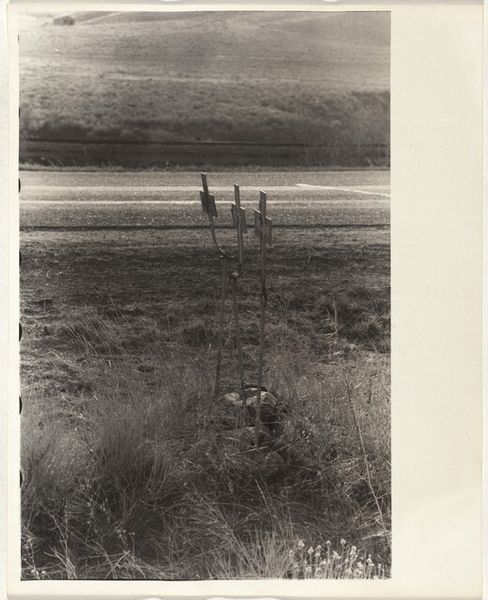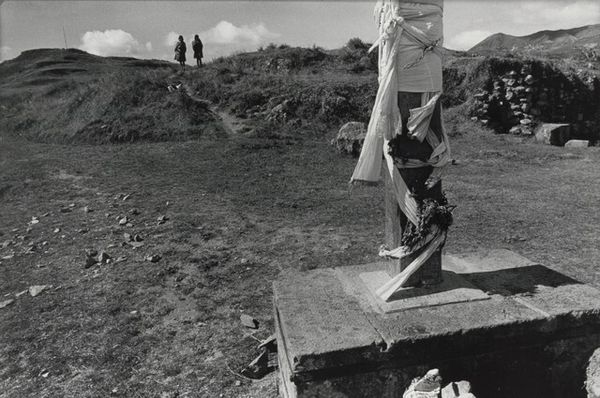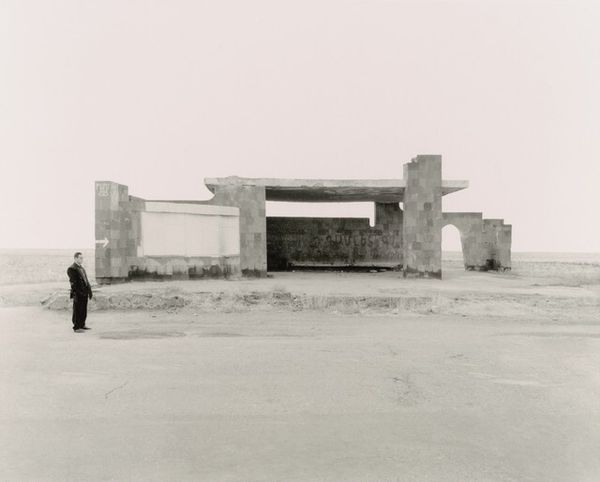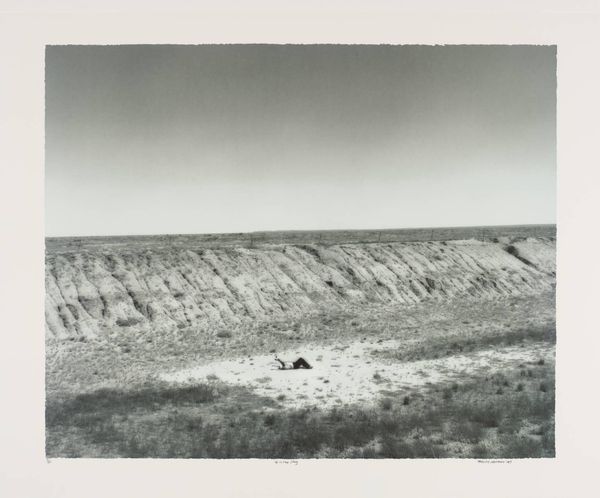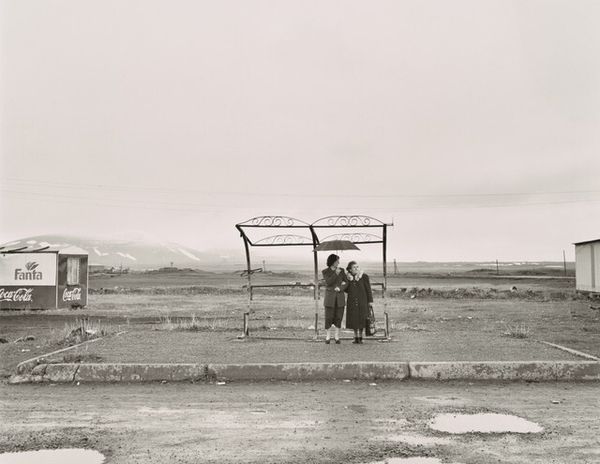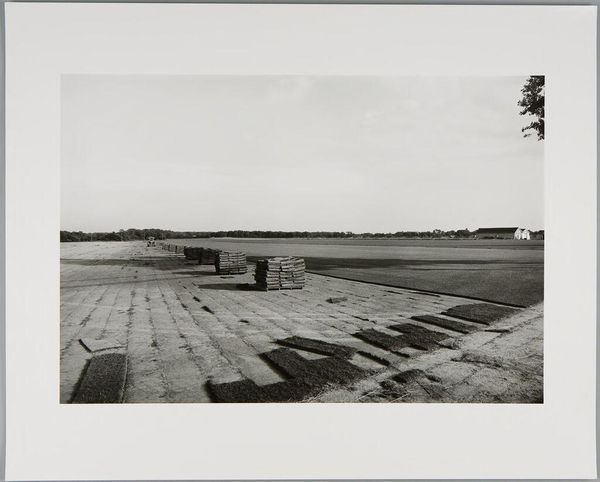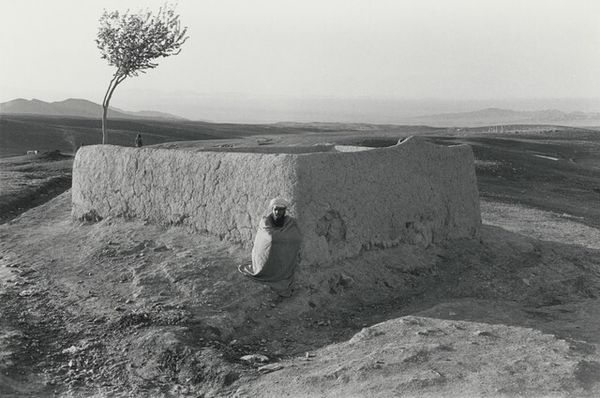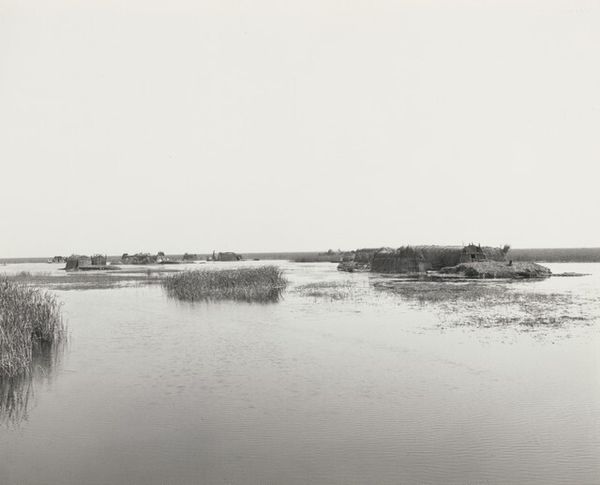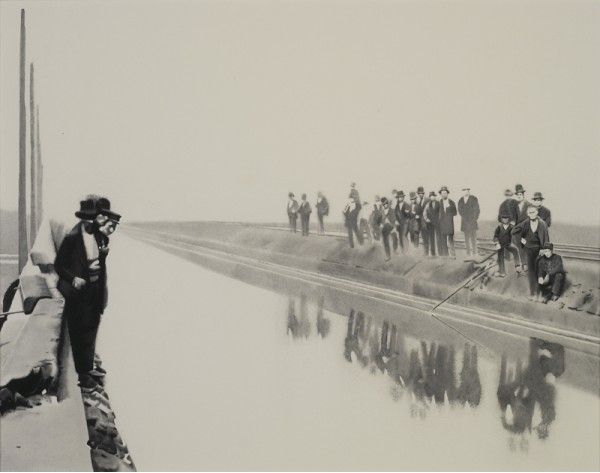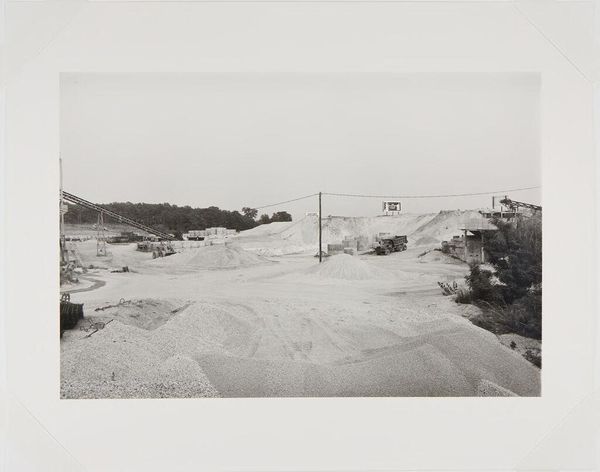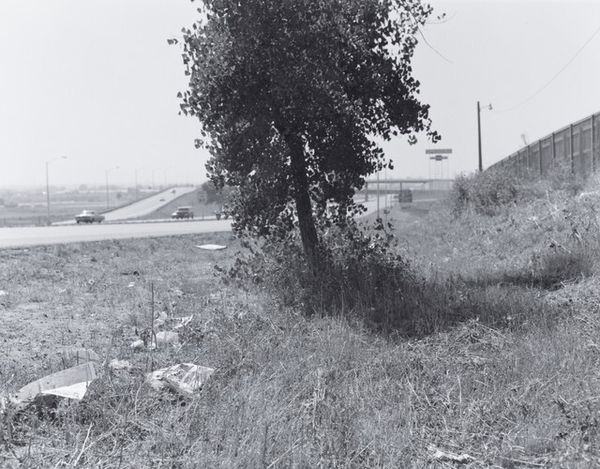
photography, gelatin-silver-print
#
black and white photography
#
landscape
#
soviet-nonconformist-art
#
monochrome colours
#
social-realism
#
photography
#
black and white
#
gelatin-silver-print
#
monochrome photography
#
monochrome
#
monochrome
Dimensions: image: 30.8 × 45.4 cm (12 1/8 × 17 7/8 in.) sheet: 40.64 × 50.17 cm (16 × 19 3/4 in.)
Copyright: National Gallery of Art: CC0 1.0
Curator: A lone figure, a meticulously rendered landscape, and that looming grey sky… it all just drips with that certain kind of solemn quiet, doesn’t it? Editor: Indeed. What we have here is "Near Moscow, USSR", a gelatin silver print by Elliott Erwitt from 1966. Erwitt, known for his candid and often witty observations of human life, here offers us something rather more…reserved. Curator: Reserved is polite. I feel this strange cocktail of control and utter desolation. It's bleakly beautiful, like a dream you can’t quite shake. Editor: The composition itself contributes to that feeling. Observe how the subject—the model landscape, and the soldier examining it – is neatly framed, contained by the geometry of the shot. The dark expanse of sky presses down. There is a definite hierarchy at play. Curator: Oh, absolutely. Someone planned every inch. And there’s that figure – ramrod straight, peering at the model – is he imposing order? Or just completely lost? He mirrors that feeling, for me. Like looking at a map but not understanding where you really are. Editor: I am glad you brought up that model. What a fascinating and compelling image! The miniature diorama is strikingly odd within that large, vacant area; the meticulous details draw one in, but for what purpose? What’s staged or symbolized within this model’s materiality? Curator: That tension gets me, you know? The feeling that even with all this apparent exactitude, with the maps and models and soldiers, we still don’t actually grasp anything real, even though it tries very, very hard. It could speak to something universal about power and place. Editor: Yes, Erwitt is inviting us to question the nature of representation itself, and even consider what lies behind images created for consumption under Soviet rule. This photograph is so direct, but it offers us so little to latch onto. Curator: Exactly. It’s a photo that keeps whispering long after you’ve looked away. I find myself thinking about it. What an era; What an artist. Editor: Very true, its monochrome world serves as a poignant reminder of that period and, perhaps, of the broader human impulse to map, control, and understand our environment, and how that may ultimately turn to a certain disarray.
Comments
No comments
Be the first to comment and join the conversation on the ultimate creative platform.
